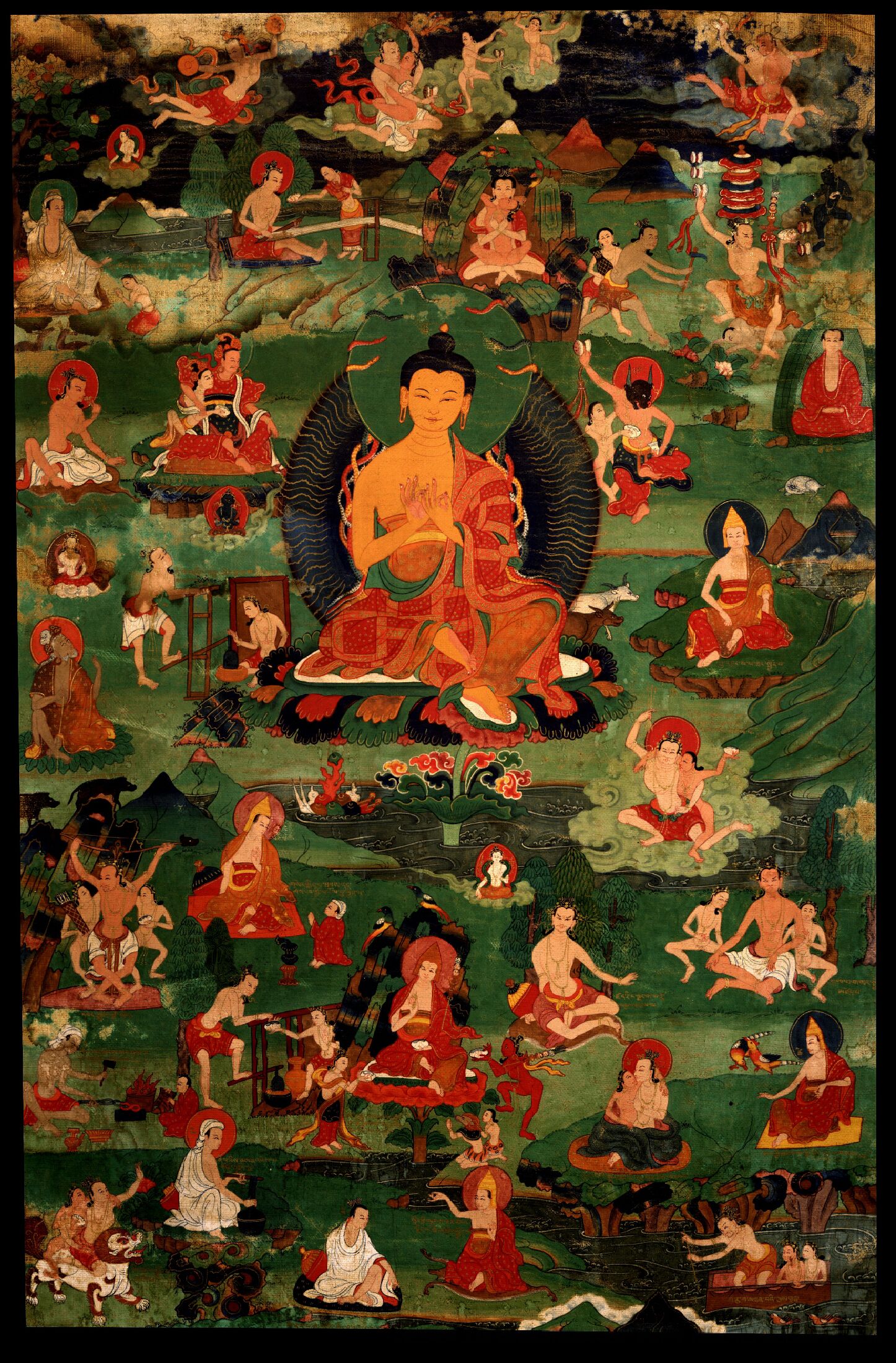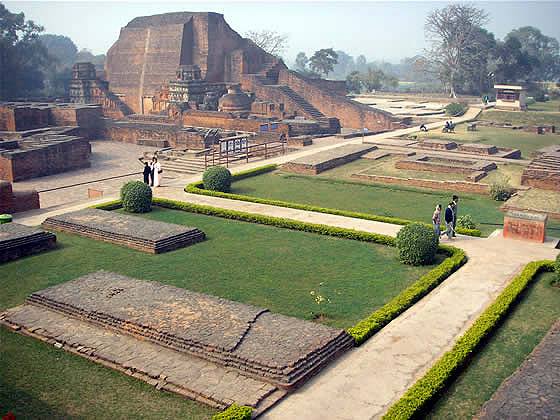|
Nāgārjuna
Nāgārjuna (Sanskrit: नागार्जुन, ''Nāgārjuna''; ) was an Indian monk and Mahāyāna Buddhist philosopher of the Madhyamaka (Centrism, Middle Way) school. He is widely considered one of the most important Buddhist philosophers.Garfield, Jay L. (1995), ''The Fundamental Wisdom of the Middle Way'', Oxford: Oxford University Press. Nāgārjuna is widely considered to be the founder of the Madhyamaka school of Buddhist philosophy and a defender of the Mahāyāna movement. His ''Mūlamadhyamakakārikā'' (''Root Verses on Madhyamaka'', MMK) is the most important text on the Madhyamaka philosophy of emptiness. The MMK inspired a large number of commentaries in Sanskrit, Chinese, Tibetan, Korean and Japanese and continues to be studied today. History Background India in the first and second centuries CE was politically divided into various states, including the Kushan Empire and the Satavahana Kingdom. At this point in Buddhist history, the Buddhist comm ... [...More Info...] [...Related Items...] OR: [Wikipedia] [Google] [Baidu] |
Madhyamaka
Madhyamaka ("middle way" or "centrism"; ; ; Tibetic languages, Tibetan: དབུ་མ་པ་ ; ''dbu ma pa''), otherwise known as Śūnyavāda ("the Śūnyatā, emptiness doctrine") and Niḥsvabhāvavāda ("the no Svabhava, ''svabhāva'' doctrine"), refers to a tradition of Buddhist philosophy and practice founded by the History of Buddhism in India, Indian Buddhist monk and philosopher Nagarjuna, Nāgārjuna ().Wynne, Alexander (2015) ''Early Buddhist Teaching as Proto-śūnyavāda.'' Journal of the Oxford Centre for Buddhist Studies, 6. pp. 213-241. The foundational text of the Mādhyamaka tradition is Nagarjuna, Nāgārjuna's ''Mūlamadhyamakakārikā'' ("Root Verses on the Middle Way"). More broadly, Madhyamaka also refers to the ultimate nature of phenomena as well as the non-conceptual realization of ultimate reality that is experienced in Buddhist meditation, meditation. Since the 4th century CE onwards, Madhyamaka philosophy had a major influence on the subsequent d ... [...More Info...] [...Related Items...] OR: [Wikipedia] [Google] [Baidu] |
Śūnyatā
''Śūnyatā'' ( ; ; ), translated most often as "emptiness", "Emptiness, vacuity", and sometimes "voidness", or "nothingness" is an Indian philosophical concept. In Buddhism, Jainism, Hinduism, and Indian philosophy, other Indian philosophical traditions, the concept has multiple meanings depending on its doctrinal context. It is either an Ontology, ontological feature of reality, a meditative state, or a Phenomenology (philosophy), phenomenological analysis of experience. In Theravada, Theravāda Buddhism, ' often refers to the Anatta, non-self (Pāli: ', Sanskrit: ') nature of the Skandha, five aggregates of experience and the Āyatana, six sense spheres. ' is also often used to refer to a Buddhist meditation, meditative state or experience. In Mahayana, Mahāyāna Buddhism, ' refers to the tenet that "all things are empty of intrinsic existence and nature (''svabhava'')", but may also refer to the Buddha-nature teachings and primordial or empty awareness, as in Dzogchen ... [...More Info...] [...Related Items...] OR: [Wikipedia] [Google] [Baidu] |
Mūlamadhyamakakārikā
The ''Mūlamadhyamakakārikā'' (), abbreviated as ''MMK'', is the foundational text of the Madhyamaka school of Mahāyāna Buddhist philosophy. It was composed by the Indian philosopher Nāgārjuna (around roughly 150 CE).Siderits and Katsura (2013), p. 1. The MMK makes use of reductio arguments to show how ''all'' phenomena ('' dharmas'') are empty of '' svabhava'' (which has been variously translated as essence, own-being, or inherent existence). The MMK is widely regarded as one of the most influential and widely studied texts in the history of Buddhist philosophy. The MMK had a major impact on the subsequent development of Buddhist thought, especially in Tibetan Buddhism and East Asian Buddhism. Background The MMK is the work of Nāgārjuna, an Indian Buddhist monk and philosopher writing in Sanskrit. Very little is known about this figure, including exactly where he lived (somewhere in the Indian subcontinent), exactly what time (some time around the 2nd or 3rd century ... [...More Info...] [...Related Items...] OR: [Wikipedia] [Google] [Baidu] |
Two Truths Doctrine
The Buddhism, Buddhist doctrine of the two truths (Sanskrit: '','' ) differentiates between two levels of ''satya'' (Sanskrit; Pāli: ''sacca''; meaning "truth" or "reality") in the teaching of Gautama Buddha, Śākyamuni Buddha: the "conventional" or "provisional" (''saṁvṛti'') truth, and the "absolute" or "ultimate" (''paramārtha'') truth. The exact meaning varies between the various Schools of Buddhism, Buddhist schools and Southern, Eastern and Northern Buddhism, traditions. The best known interpretation is from the Madhyamaka, Mādhyamaka school of Mahayana, Mahāyāna Buddhism, whose founder was the 3rd-century History of Buddhism in India, Indian Buddhist monk and philosopher Nagarjuna, Nāgārjuna. For Nāgārjuna, the two truths are ''epistemological truths''. The phenomenal world is accorded a provisional existence. The character of the phenomenal world is declared to be neither real nor unreal, but logically indeterminable. Ultimately, Śūnyatā, all phenomena are ... [...More Info...] [...Related Items...] OR: [Wikipedia] [Google] [Baidu] |
Buddhist Philosophy
Buddhist philosophy is the ancient Indian Indian philosophy, philosophical system that developed within the religio-philosophical tradition of Buddhism. It comprises all the Philosophy, philosophical investigations and Buddhist logico-epistemology, systems of rational inquiry that developed among various schools of Buddhism in ancient India following the ''Parinirvana, parinirvāṇa'' of Gautama Buddha (c. 5th century BCE), as well as the further developments which followed the Silk Road transmission of Buddhism, spread of Buddhism throughout Asia. Buddhism combines both philosophical reasoning and the Buddhist meditation, practice of meditation.Siderits, Mark. Buddhism as philosophy, 2007, p. 6 The Buddhist religion presents a multitude of Buddhist paths to liberation; with the expansion of early Buddhism from ancient India to Sri Lanka and subsequently to East Asia and Southeast Asia, Buddhist thinkers have covered topics as varied as cosmology, ethics, epistemology, logic ... [...More Info...] [...Related Items...] OR: [Wikipedia] [Google] [Baidu] |
Mahāyāna
Mahāyāna ( ; , , ; ) is a term for a broad group of Buddhist traditions, Buddhist texts#Mahāyāna texts, texts, Buddhist philosophy, philosophies, and practices developed in ancient India ( onwards). It is considered one of the three main existing branches of Buddhism, the others being Theravāda and Vajrayāna.Harvey (2013), p. 189. Mahāyāna accepts the main scriptures and teachings of Early Buddhist schools, early Buddhism but also recognizes various doctrines and texts that are not accepted by Theravada Buddhism as original. These include the Mahāyāna sūtras and their emphasis on the ''bodhisattva'' path and Prajnaparamita, ''Prajñāpāramitā''. Vajrayāna or Mantra traditions are a subset of Mahāyāna which makes use of numerous Tantra, tantric methods Vajrayānists consider to help achieve Buddhahood. Mahāyāna also refers to the path of the bodhisattva striving to become a fully awakened Buddha for the benefit of all sentience, sentient beings, and is thus also ... [...More Info...] [...Related Items...] OR: [Wikipedia] [Google] [Baidu] |
Tiantai
Tiantai or T'ien-t'ai () is an East Asian Buddhist school of Mahāyāna Buddhism that developed in 6th-century China. Drawing from earlier Mahāyāna sources such as Madhyamaka, founded by Nāgārjuna, who is traditionally regarded as the first patriarch of the school, Tiantai Buddhism emphasizes the "One Vehicle" () doctrine derived from the influential '' Lotus Sūtra'', as well as the philosophy of its fourth patriarch, Zhiyi (538–597 CE), the principal founder of the tradition. Brook Ziporyn, professor of ancient and medieval Chinese religion and philosophy, states that Tiantai Buddhism is "the earliest attempt at a thoroughgoing Sinitic reworking of the Indian Buddhist tradition." According to Paul Swanson, scholar of Buddhist studies, Tiantai Buddhism grew to become "one of the most influential Buddhist traditions in China and Japan." Tiantai is sometimes also called "The Dharma Flower School" (), after its focus on the '' Lotus Sūtra'', whose Chinese title tra ... [...More Info...] [...Related Items...] OR: [Wikipedia] [Google] [Baidu] |
Caitika
Caitika () was an Early Buddhist schools, early Buddhist school, a sub-sect of the Mahāsāṃghika. They were also known as the Caityaka sect. The Caitikas proliferated throughout the mountains of South India, from which they derived their name. In Pali writings, members of this sect and its offshoots were generally referred to as the ''Andhakas'', meaning "of Coastal Andhra". History The Caitikas branched off from the main Mahāsāṃghika school in the 1st or 2nd century BCE. Epigraphic evidence of the Mahāsāṃghikas in the Mathura region dates to the first century BCE, and the ' dates the formation of the Caitikas to 300 years after the Buddha. However, the ancient Buddhist sites in the lower Kṛṣṇa Valley, including Amarāvati Stupa, Nagarjunakonda, Nāgārjunakoṇḍā and Jaggaiahpet, Jaggayyapeṭa "can be traced to at least the third century BCE, if not earlier." The Caitikas gave rise to the Aparaśailas and Uttaraśailas (also called Pūrvaśailas). T ... [...More Info...] [...Related Items...] OR: [Wikipedia] [Google] [Baidu] |
Aṣṭasāhasrikā Prajñāpāramitā Sūtra
The ''Aṣṭasāhasrikā Prajñāpāramitā Sūtra'' (Sanskrit: अष्टसाहस्रिका प्रज्ञापारमिता सूत्र; English language, English: ''The Perfection of Wisdom in Eight Thousand [Lines]'') is a Mahayana, Mahāyāna Buddhist Mahayana sutras, sūtra in the category of Prajnaparamita, Prajñāpāramitā sūtra literature. The sūtra's manuscript witnesses date to at least , making it among the oldest Buddhist manuscripts in existence.{https://blogs.loc.gov/international-collections/2019/07/2000-year-old-buddhist-scroll-from-ancient-gandhara-digitized-by-library-of-congress/ Library of Congress blog post] The sūtra forms the basis for the expansion and development of the Prajñāpāramitā sūtra literature. In terms of its influence in the development of Buddhist philosophy, Buddhist philosophical thought, P.L. Vaidya writes that "all Buddhist writers from Nagarjuna, Nāgārjuna, Aryadeva, Āryadeva, Maitreya-nātha, Maitre ... [...More Info...] [...Related Items...] OR: [Wikipedia] [Google] [Baidu] |
Mahayana Sutras
The Mahayana sutras are Buddhist texts that are accepted as wikt:canon, canonical and authentic Buddhist texts, ''buddhavacana'' in Mahayana, Mahayana Buddhist sanghas. These include three types of sutras: Those spoken by the Buddha; those spoken through the Buddha's blessings; and those spoken through mandate. They are largely preserved in Sanskrit manuscripts, and in translations such as the Tibetan Buddhist canon, and Chinese Buddhist canon. Several hundred Mahāyāna sutras survive in Sanskrit, Tibetan and Chinese translations. The Buddhist scholar Asanga classified the Mahāyāna sūtras as part of the ''Bodhisattva Tripiṭaka'', a collection of texts meant for bodhisattvas.Boin-Webb, Sara (tr). Rahula, Walpola (tr). Asanga. ''Abhidharma Samuccaya: The Compendium of Higher Teaching.'' 2001. pp. 199–200 Buddhists consider the most important Mahayana sutras to be the spoken teachings of Gautama Buddha, Shakyamuni Buddha. These were quickly recorded one year following his Ma ... [...More Info...] [...Related Items...] OR: [Wikipedia] [Google] [Baidu] |
Schools Of Buddhism
The schools of Buddhism are the various institutional and doctrinal divisions of Buddhism, which have often been based on historical sectarianism and the differing teachings and interpretations of specific Buddhist texts. The branching of Buddhism into separate schools has been occurring from ancient times up to the present. The classification and nature of the various doctrinal, philosophical or cultural facets of the schools of Buddhism is vague and has been interpreted in many different ways, often due to the sheer number (perhaps thousands) of different sects, sub-sects, movements, etc. that have made up or currently make up the whole of the Buddhist tradition. The sectarian and conceptual divisions of Buddhist thought are part of the modern framework of Buddhist studies, as well as comparative religion in Asia. Some factors in Buddhist doctrine appear to be consistent across different schools, such as the afterlife, while others vary considerably. From a largely English ... [...More Info...] [...Related Items...] OR: [Wikipedia] [Google] [Baidu] |









